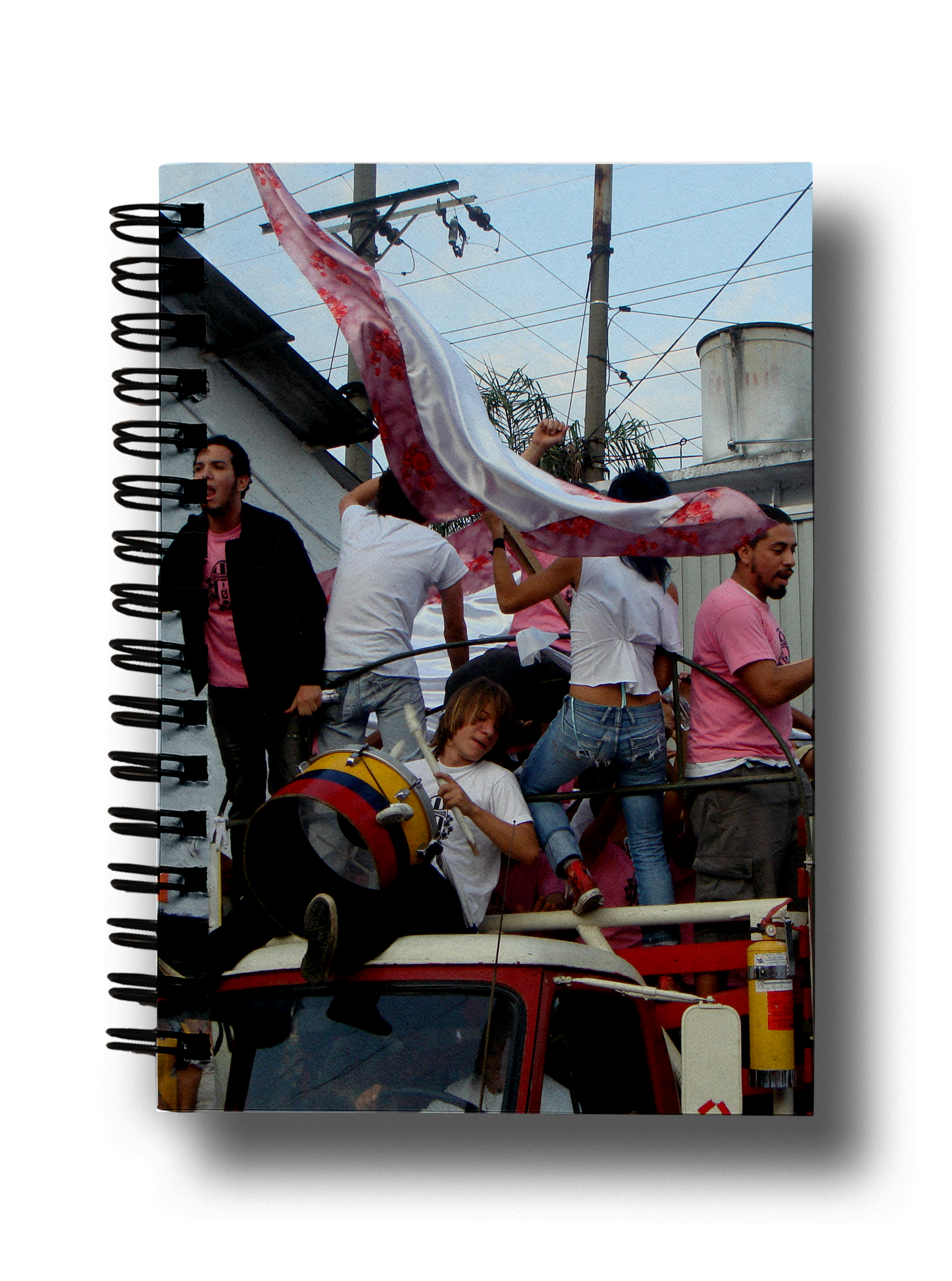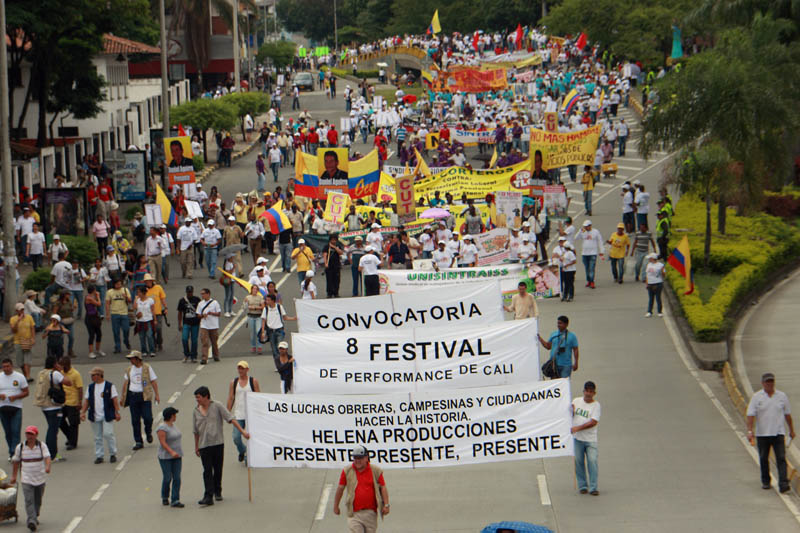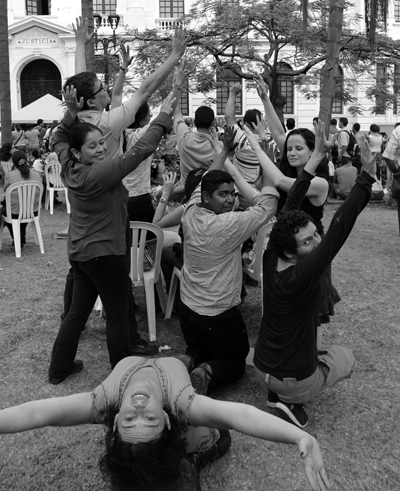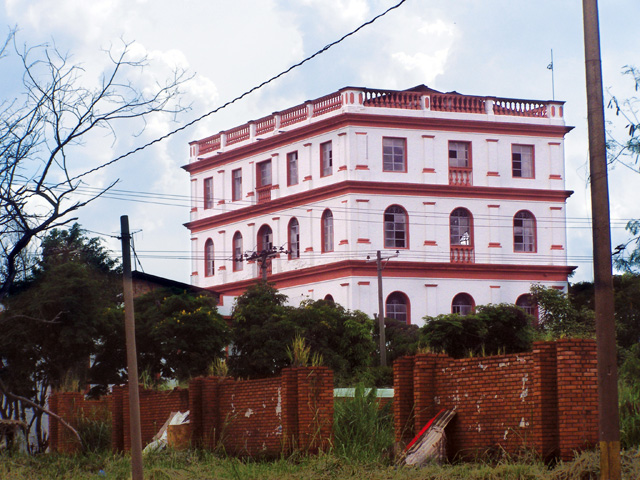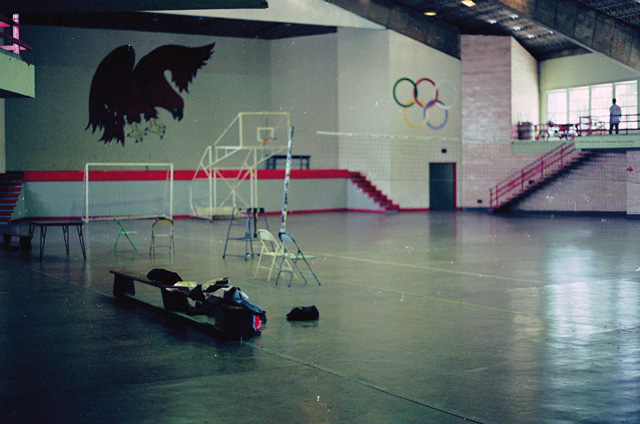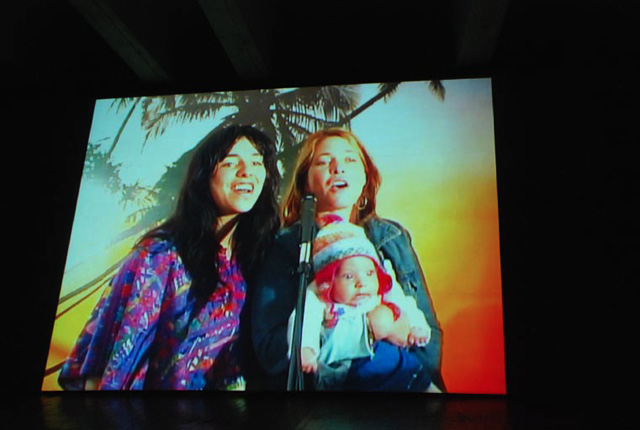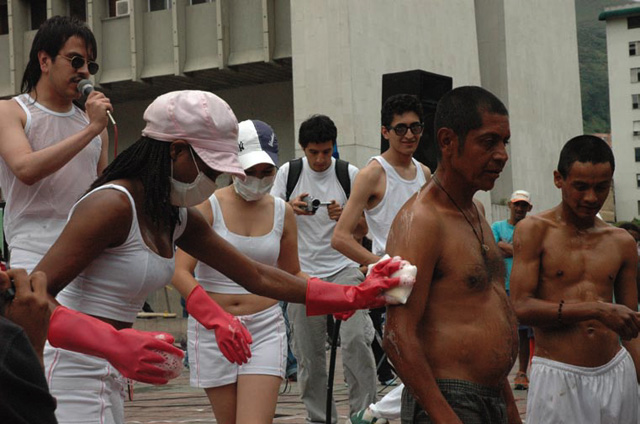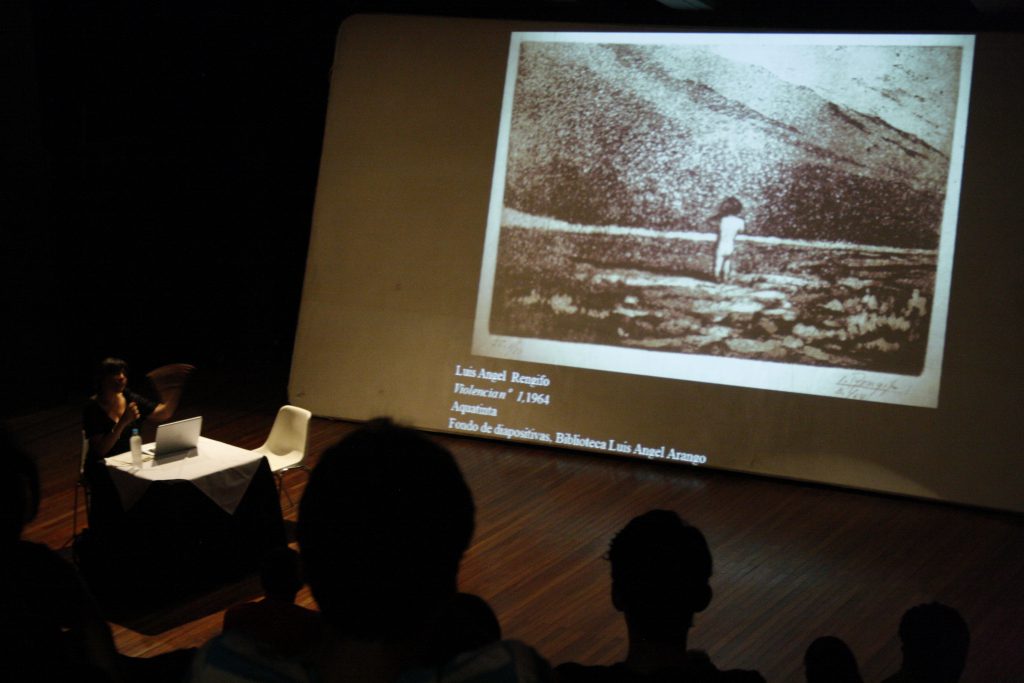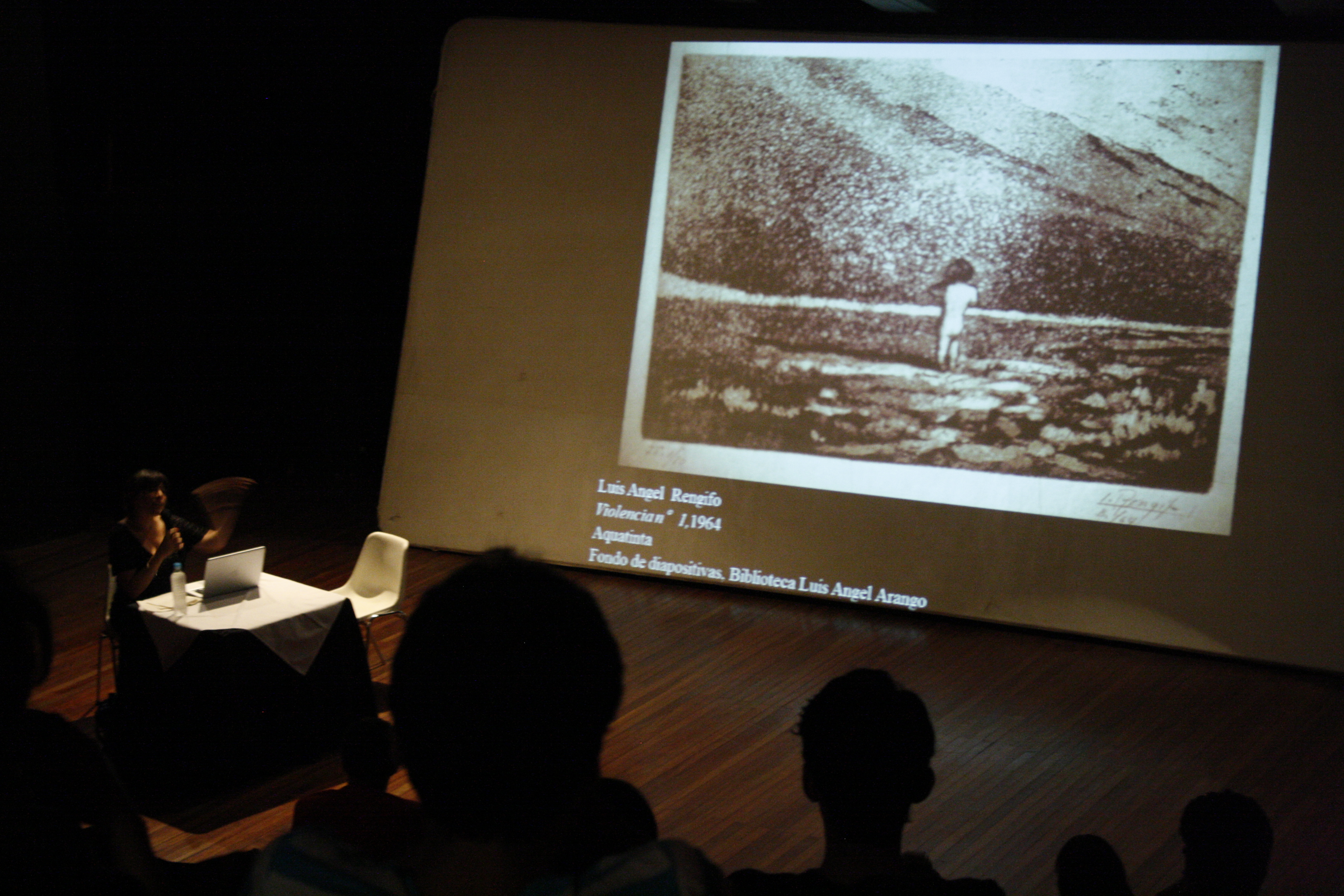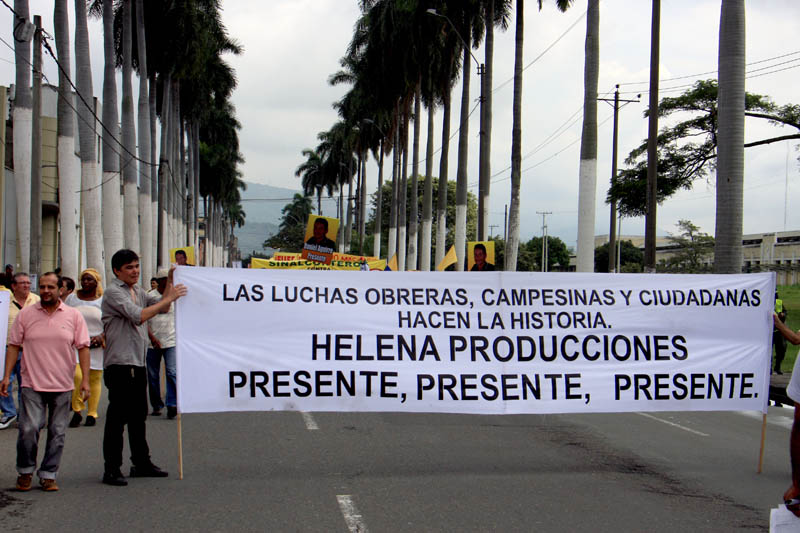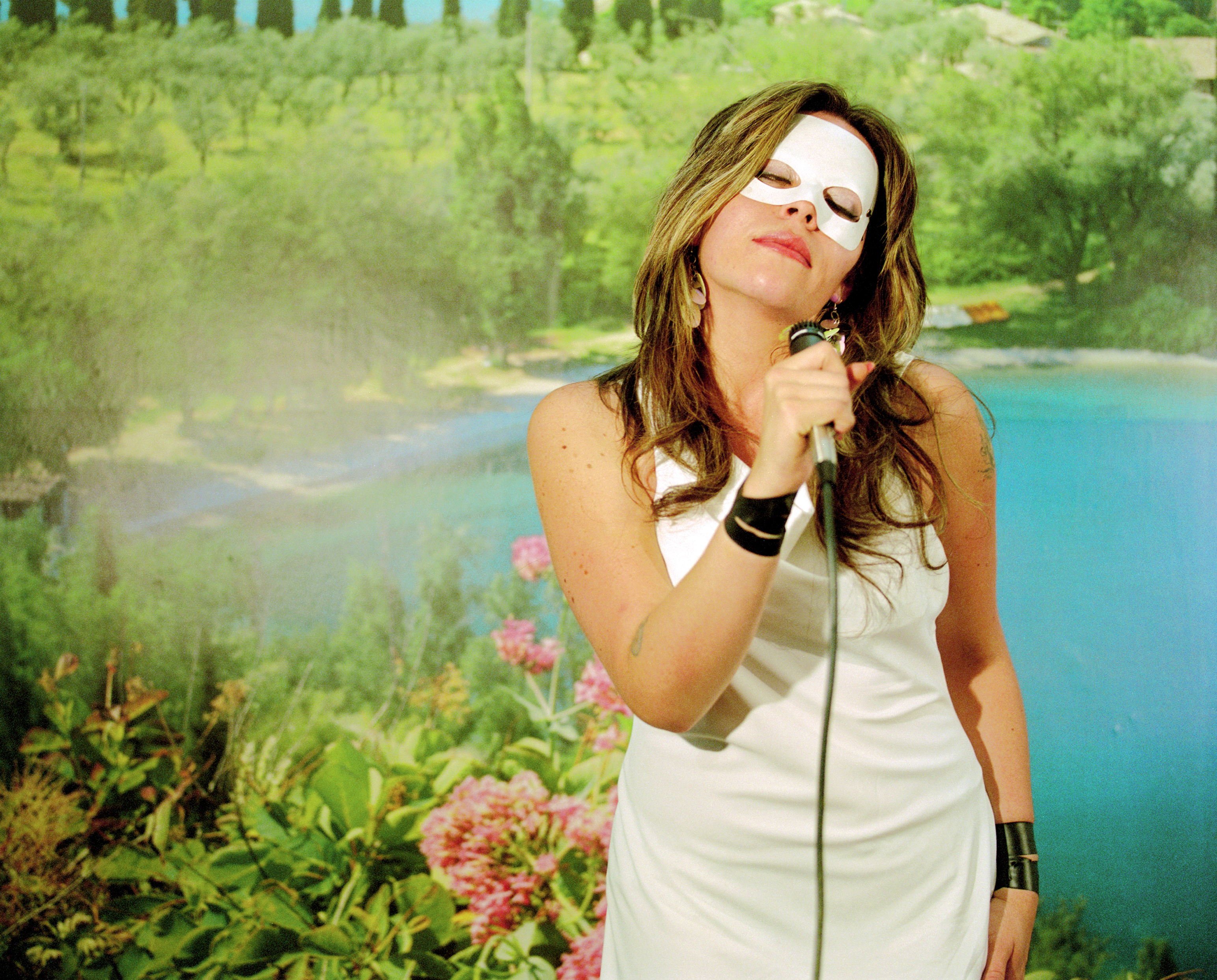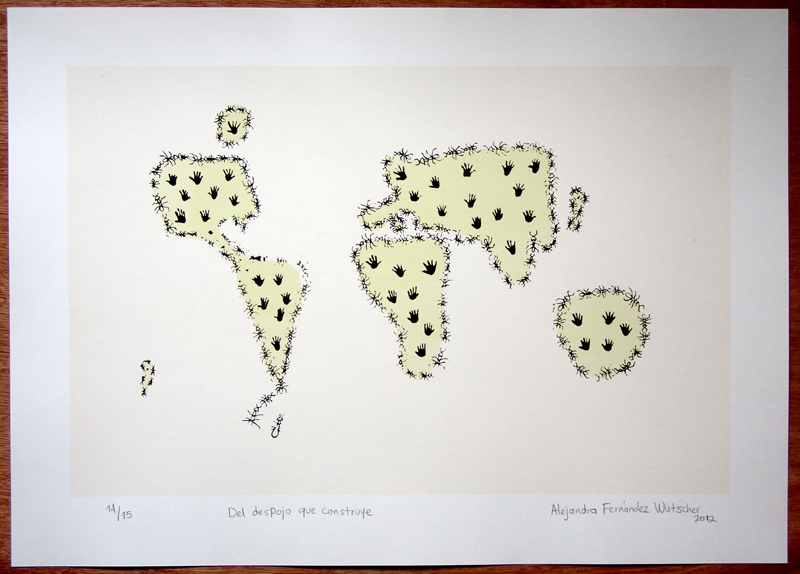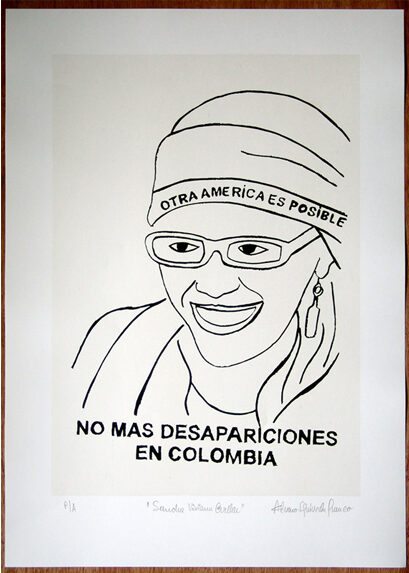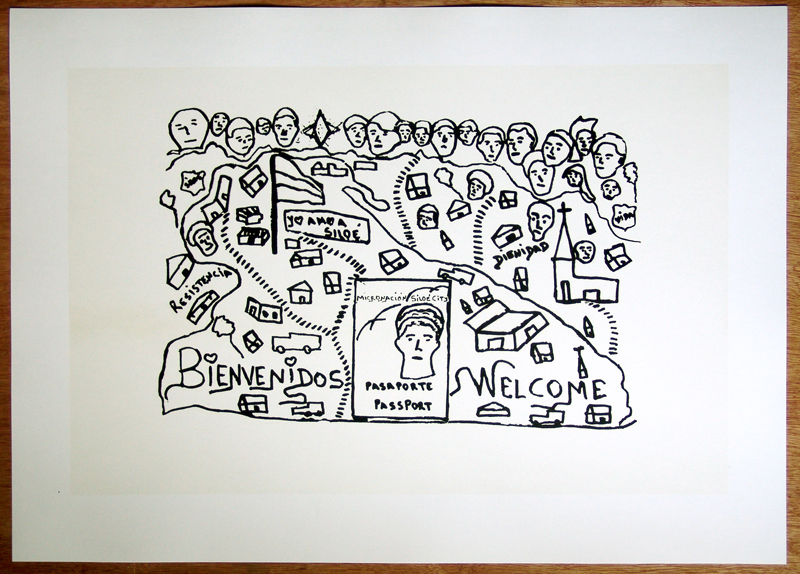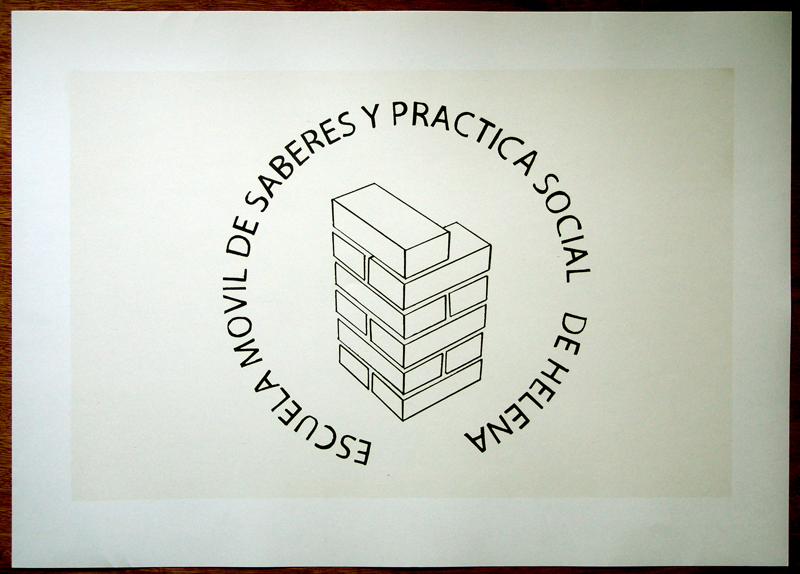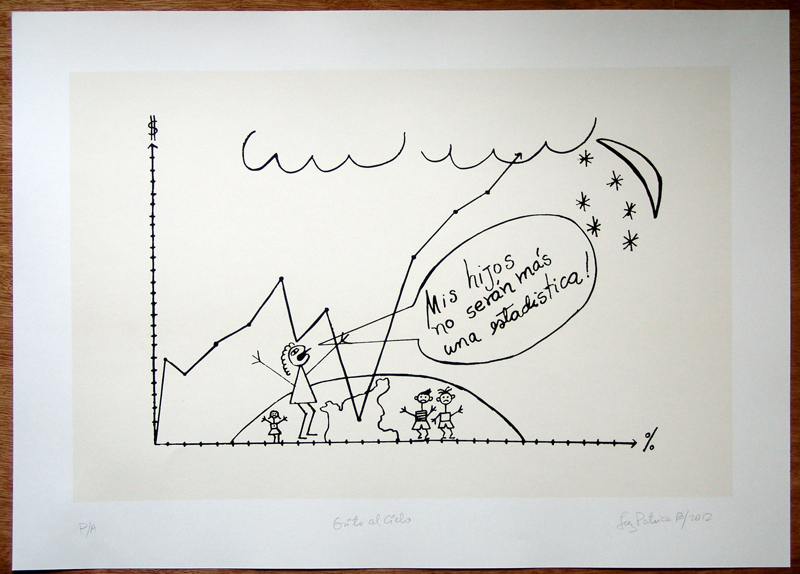CHAPTER 1: CAMILO TORRES
On February 15, 1966, a young priest was shot twice and died next to a path along a steep mountainside of the Cordillera Oriental. He and five other members of his guerrilla squad had emerged from the forest to ambush twenty soldiers from the Fifth Brigade of the Colombian army charged with fighting insurgents. The priest, a tall and handsome man, was named Camilo Torres.
I never met Camilo Torres, of course. But I did know his ghost from the numerous passionate accounts of his heroic deeds recounted to me by my mother and others of her generation. Among his most heroic acts was presiding over the marriage of my youngest aunt, fifteen years before I was born. My aunt, then a student, remained happily married and fully committed to her leftist ideals until the day she died.
Like Camilo Torres, my aunt was brought up in an upper-middle-class-family; however, unlike Camilo, she never joined the guerrilla movement. On January 1, 1966, he took off his habit, walked from his house to a bus station, and boarded a bus to a remote village in the mountains of Santander. Within hours, he became a member of the ELN (Ejército de Liberación Nacional), a newly formed Marxist guerrilla movement.
In the years leading up to his enlistment as a guerrillero, Torres had been a well-known intellectual and sociology professor in the economics department at the Universidad Nacional, as well as the priest of the university chapel. A graduate of the Université Catholique de Louvain in Belgium, he worked with Colombia’s most renowned social scientists to create the first sociology department in Latin America.
By the beginning of the 1960s, Torres had already become a mythical figure, inspiring countless leftist students and activists in Latin America. As the most celebrated representative of liberation theology, he founded the Frente Unido, a political movement that opposed the Frente Nacional—a political alliance made in 1958 between the traditional, corrupt Liberal and Conservative parties, which excluded the Left from formal representation. Its purpose was to ensure that the two parties would share power for the next sixteen years until 1974, the year I was born.
The motive behind this pact was allegedly to put an end to the civil war that had been fought between Liberals and Conservatives since the early twentieth century and that had escalated after the assassination of the radical Liberal presidential candidate Jorge Eliécer Gaitán in 1948. One of the disastrous consequences of the Frente Nacional was that Marxist and independent ideologies were erased from the of the country’s political map. For many students and intellectuals of the 1960s, the only way to have a political voice was to join the guerrilla movements.
*
Long after Torres took that bus to Santander, his ghost began to haunt me. A mediocre student of architecture at the Universidad Nacional in the mid-1990s, I often play football with my friends in the field adjacent to the modernist building housing the chapel where “Camilo”—as he was fondly referred to by parish members and followers—preached Catholic and Marxist doctrines. This was the very same chapel where my aunt had married three decades previously.
One sunny afternoon, while flaunting my athletic skills, I accidentally shattered one of the windows of the chapel. I know this sounds unbelievable, but I can swear by the name of any god that a priest who looked exactly like Camilo came out of the chapel and, rather than reprimand me as he should have done, walked slowly back inside with his head bent over, like a shadow from the past.
Two years later—by this time I had stopped playing football and become an architect—few of Camilo’s utopic ideas could be seen on the campus. In fact, his legacy had been heavily distorted over time and the results were extremely disheartening. Young students sporting a bizarre style that combined the aesthetic of contemporary Soviet teenagers with that of global punk rockers routinely burned school buses and dumpsters in the name of a guerrilla movement that had become a major drug cartel. Meanwhile, the university labor union would use just about any excuse to call for a general strike thus paralyzing the university for semesters, even years, on end. Only a few rigorous, incorruptible Marxist professors remained, lecturing to a small group of distracted Marxist students.
*
Camilo survived only six weeks in the guerrilla, where he acted as a priest and ideological mentor for young fighters. It was during his very first combat that he was fatally wounded by young soldiers who were fighting under the command of his childhood friend Colonel Alvaro Valencia Tovar. An ultra-conservative upper-middle-class intellectual, Valencia Tovar was unaware that his old friend was fighting in this particular region.
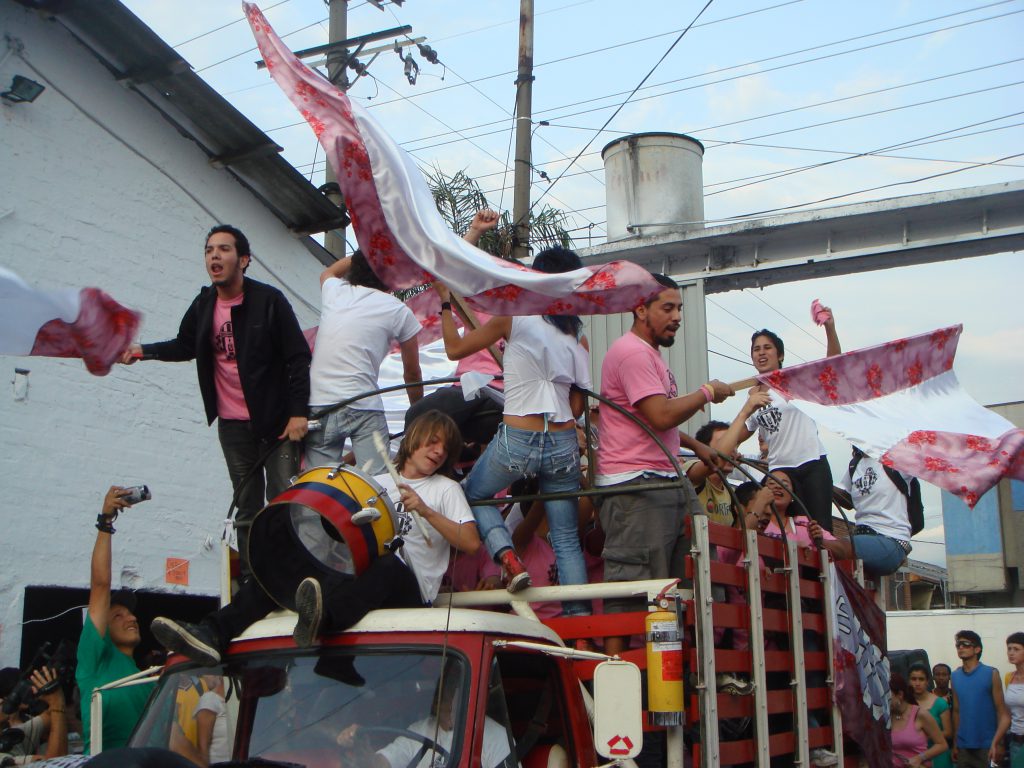
Camilo was buried on February 17, 1966, in an undisclosed location. His ghost, however, continued to haunt Colombian history for decades to come. In his book, El final de Camilo (The End of Camilo, 1976) Valencia Tovar (then commander in chief of the army), revealed previously unknown details surrounding Camilo’s death.
According to Valencia Tovar, Camilo died while attempting to steal the rifles of soldiers killed in an ambush. While Camilo’s comrade, an experienced fighter, managed to escape crawling through the mud, the priest was shot twice by a soldier who had appeared to be dead but wasn’t. Following a three-day storm, the general went up into the mountains of Carmen de Chucurí to identify Camilo’s body, which he recognized not only from the (partially disfigured) face but also from the French letters in his pocket and the silver ring on the stem of his pipe. The army’s forensic experts would later confirm the identity of the corpse.
The general also describes how several of the young soldiers who took part in the skirmish quit the army soon after they learned that they had shot a priest, and reported to newspapers that they could see his ghost.
*
Thirty-five years later, Camilo’s ghost began to appear to me, but in a much kinder and gentler way. It was 2001, and as a professor, at the Universidad de Valle in Cali I was conducting a creative writing workshop with ten students who were all half-asleep. The workshop was just about to finish (thank god) when a violent protest erupted on the campus.
Soon after the first explosions of homemade gunpowder, the unbearable chanting of Stalinist slogans came in through the open windows. My students, unmoved by the commotion, remained lethargic until a university employee rushed in shouting that the protest had gotten out of control and that the police were shooting tear gas and rubber bullets, and that we had to evacuate the building.
After running through a cloud of tear gas, the employee and I took shelter behind the base of an iron statue of Camilo Torres. Acting as a sort of phantom Cupid, Camilo placed a beautiful, visibly shaken young teacher in my path. She would later become my girlfriend, but unfortunately, the real Camilo was no longer there to marry us.
*
Twenty-four hours after Valencia Tovar identified the priest’s body in the tropical forest of Carmen de Chucurí, Camilo’s brother called. He was a middle-class doctor living in the belly of the capitalist beast—Minnesota—and he instructed the colonel to do what the colonel had already done: bury the body in a secret location.
They agreed about this because both believed that Camilo should rest in peace with nature and that his body should not be used for political purposes, and should not, under any circumstance, be worshiped by the masses. The body, wrapped in four layers of plastic bags, remained in that secret location for three years.
In a 2007 interview, the retired general finally revealed a secret that he had guarded for thirty-eight years. In 1969 he exhumed Camilo’s remains and put them in a crypt. He had convinced the city of Bucaramanga to build a mausoleum on the Third Brigade premises for the bodies of honorable soldiers fallen in action. Astonishingly, Camilo’s remains were the first to be put to final rest there, during a Catholic ceremony attended by dozens of soldiers. Nobody but Valencia Tovar knew to whom the bones belonged.
There is a final and equally startling chapter in this story. In 2004 Camilo’s brother returned to Colombia to remove the remains from the mausoleum and have them cremated. He then went back to Minneapolis, where he died two years later. Since then the whereabouts of Camilo’s ashes have been unknown.
Today he is the lightest of all ghosts. Ashes blowing in the wind—this is one possible outcome of this middle-class encounter with revolution. Camilo’s ghost is so ephemeral that he remains forever out of reach of the very few middle-class students and teachers and militants who still remember him. His is a tireless ghost, however, who will continue to haunt us forever.
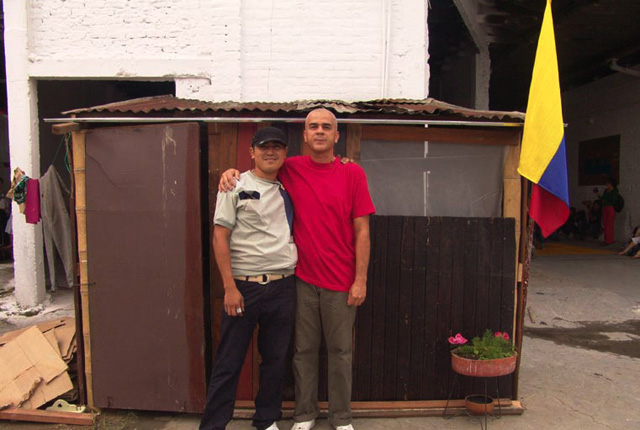 arrow_upward
arrow_upward
CHAPTER 2: TIROFIJO
We saw the footage on TV and knew that the talks were going nowhere. On June 9, 1998, the Colombian government and the FARC officially began a round of negotiations in order to reach a peace agreement after thirty-four years of war. The last such agreement had been signed in 1985 and had resulted in the creation of the UP (Unión Patriótica): the first Marxist party that had real potential to acquire political power through democratic means. Each and every one of its members was subsequently exterminated in a ruthless and systematic manner.
In 1998, the government staged a televised meeting between President Andrés Pastrana and the mythical guerrillero Pedro Antonio Marín, aka Manuel Marulanda Vélez, aka Tirofijo (Sureshot). Both parties were meant to sit at a table with a large Colombian flag displayed prominently in the background and sign a treaty initiating the process of negotiation. What actually occurred was that President Pastrana was kept waiting for an hour on live television until Tirofijo sent a message saying that he was not coming.
Pastrana was a dim-witted Conservative president, the son of another dim-witted Conservative president who had been accused of committing fraud in the 1970 elections. Tirofijo, on the other hand, was a living legend. Born in 1930 into a family of radical liberal peasants who owned twenty acres of land, he left home at sixteen. He earned his living alternately as a meat delivery person, a baker, a candy vendor, a construction worker, a shop owner, and a government inspector of roads.
Following the assassination of Jorge Eliécer Gaitán on April 9, 1948, a wave of violence erupted and spread throughout the country. Members of the Conservative party hired assassins, and soldiers (morally empowered by the complicity of the Catholic Church) set out to kill all Liberals and appropriate their land. When the mob of pájaros (hired gunmen) arrived in Marín’s village, his family was identified as Gaitán supporters and attacked. Marín took refuge at his uncle’s farm, where he remained in hiding for six months. When he went back to his parent’s farm, it had been burned to the ground and all the livestock had been stolen.
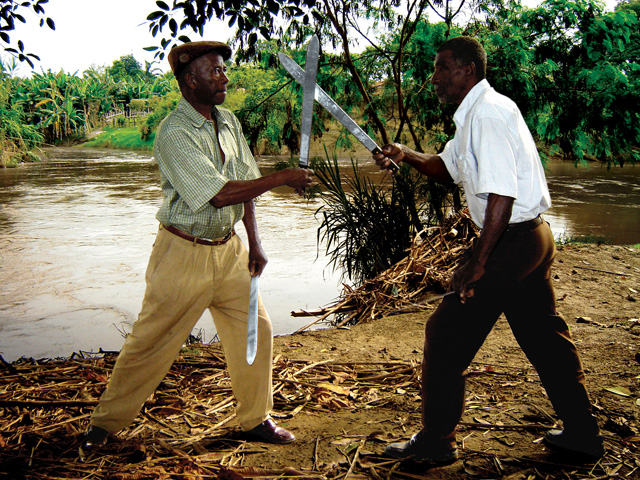
This traumatic personal event prompted Marín to create a group of peasants, including family members and friends, to fight Conservative militants and the army. The group quickly expanded and made alliances with other peasant self-defense organizations. Marín acquired the nicknamed Tirofijo thanks to his exceptional shooting ability. Some years later, he changed his name to Manuel Marulanda Vélez, after a communist union leader murdered in 1951, but would always be known as Tirofijo to the peasants.
In the few interviews he gave, Marín stated that prior to his life as a guerrillero, he had never heard of Weber or Hegel or Marx, and had considered himself a member of the middle class. His family’s medium-sized farm had been destroyed, and he refused to allow this to happen to him or his fellow peasants ever again. That’s how the insurgency all began. During the 1998 dialogues, the peace commissioner asked Marín what he would do if they reached an agreement. His reply was that he would go back to work in Génova on the farm where he grew up if it still existed.
He stopped feeling like he was a member of that imaginary middle class when Marxist students and intellectuals from the big cities joined the insurgents. They taught him about Weber, Marx, and Engels, and explained to him that he was not middle-class at all but, rather, a rebel peasant. (They failed to mention, of course, that as students and intellectuals they themselves were, indeed, middle-class, preferring to gloss over such minor details in order to emphasize their role as champions of the people’s army.)
In 1960, he forged an alliance with movements from other southern regions to create a zone of peasant resistance in the mountains between Tolima and Huila, a densely wooded area beyond the reach of the army or the government, which was known as Marquetalia. A notorious Conservative senator—the son of a notorious Conservative president—referred to it and other insurgent enclaves, as “The Independent Republics.” This, along with growing pressure from the Conservative Party and the army, prompted President Guillermo León Valencia in 1964 to issue an order to take it by force and destroy all of the insurgent factions.
In what became a foundational myth, forty-eight fighters resisted the military siege and the air bombardments that ended on May 27, 1964—the date the FARC (Fuerzas Armadas Revolucionarias de Colombia) came into being. For decades to come, a group that had started out with only 250 peasants would build encampments and persecute the army throughout the southern and southeastern regions of the country.
*
In 1996, my friends and I organized a trip to the mountains of Norte de Santander. We would often take a bus or hitchhike to remote parts of the country, especially to places high up in the mountains, hiking for long stretches during the day and camping at night. Somewhere between the villages of Río de Oro and Abrego, a storm overtook us, and we found shelter in a tiny house.
Inside, a radio hanging from the roof played a song about Manuel Marulanda Vélez. The lyrics praised a peasant hero fighting for equality and freedom—a brave leader willing to die for his convictions. As we looked around this house with a sagging roof and a dirt floor, no running water or electricity, and inhabited by barefoot kids whose bellies were bloated from malnutrition, we understood why even then, when the guerrillas were financing their activities from drug dealing and kidnapping and attacking innocent civilians, there were still people who wrote songs about Tirofijo, and there were still people who listened to them.
For forty years, the FARC had been growing, occupying territories all over the country, improving their military capacity and strategy, and regularly ambushing outposts of the army, main roads, villages, oil pipelines, and energy towers. By 1996, the guerrilla movement consisted of approximately 15,000 soldiers, and its presence was felt in several regions.
In 1998, my mother’s best friend, an agronomist from Bucaramanga, sold his house and bought a seventy-five-acre farm on which to start an experimental farming project. He lived there for just one year, until the FARC attacked the farm, stole the animals, burned the house down, and kidnapped him, accusing him of being a member of the oligarchy, as they declared on a clandestine radio broadcast.
He was released one year later after his friends managed to put together half the amount the guerrilla demanded as ransom. Like Pedro Antonio Marín and his family forty-five years before, he would never return to his land.
*
On February 20, 2002, peace talks between the Pastrana government and the FARC were suspended. It was revealed that the guerrilleros had been storing cocaine and holding hostages in the demilitarized area of El Caguán, where the negotiations were taking place. But the last straw had been the kidnapping of a senator traveling in a plane that was forced to make an emergency landing in a field. After the president abruptly halted the negotiations, the guerrilleros were given forty-eight hours to leave El Caguán and return to the jungle, where they resumed fighting.
On February 1, 2009, a demobilized FARC guerrillera gave the newspaper La Nación the first pictures of the dead body of Pedro Antonio Marín, aka Manuel Marulanda Vélez, aka Tirofijo. After more than fifteen false reports of his death over the previous fifty years—in the 1960s a newspaper even published pictures of his burial—the mythical guerrillero had died from natural causes at the age of 79.
In the pictures his body was dressed in a new camouflage uniform, his arms crossed over his chest. Later the guerrillera would state, “Moving the body was tortuous. Three security teams of 250 men guarded the coffin. We carried it through the dense jungle between the Guaviare and Meta rivers. It took us two weeks and we walked in total silence, honoring our commander in chief. All the members of the secretariat kept his death secret until the succession of command had been decided.”
CHAPTER 3: BERNARDO JARAMILLO OSSA
I went to a middle-class school in Bogotá in the 1980s. You can picture the scene. Teenage girls with braces, football teams, pop music, basketball teams, shy boys holding hands with not-so-shy girls, teachers trying to teach, drunk kids at parties trying to act all grown up, national holidays celebrated by choirs singing out of tune, long Christmas holidays dreaming about the Caribbean while swimming in dirty pools and watching TV for hours on end.
Fortunately, this nightmare ended when I was 14; my friends and I were so bored that we took an interest in politics. The realm of politics, especially left-wing politics, was infinitely more exciting than adolescent angst. A peace agreement with a faction of the FARC had just been reached; new leftist parties were being created and young militants were in demand. There was a general feeling of hope, and we all desired to be a part of it.
Some of us claimed to be liberal leftists, others Marxists, others even Trotskyites. Our commitment to politics didn’t last long, however, but not because of a lack of interest. By the time I turned 17, there were no leaders to follow. They had all been killed, including four presidential candidates: Jaime Pardo Leal in 1987, while driving a car with his family; Luis Carlos Galán in 1989, while giving a public speech; Carlos Pizarro in 1990, while sitting in the last row of a plane flying over Bogotá; Bernardo Jaramillo Ossa, also in 1990, while waiting to board a plane.
During my teenage years, an entire political party was exterminated. The Marxist UP had been created in 1985, but, by the early 1990s, eight congressmen, thirteen deputies, eleven majors, and more than 4,000 of its militants were dead or desaparecidos. Students, teachers, trade unionists, and peasant and community leaders had been the first victims.
The creation of the UP was the result of an alliance between ex-guerrillas from the FARC (demobilized in the 1985 peace treaty), communists from an older generation, union leaders, and human rights activists. During its first year, it was accused of working for those factions of the FARC still at war, as part of a strategy of combining all forms of struggle—Colombia’s dubious contribution to Marxist-Leninist theory. By 1988 it was clear how alienated the FARC had become from its former UP comrades who had unanimously demanded an immediate end to the armed struggle and the demobilization of all the remaining guerrilleros.
Right-wing executioners formed a macabre alliance between the military, drug cartels, and paramilitary groups trained and paid for by landowners, multinational companies, and the cartels. Together they committed over one hundred massacres. President Virgilio Barco denied the government’s complicity by attributing such violent acts to “dark forces,” as if he were talking about a Star Wars movie rather than the very real history of his own country.
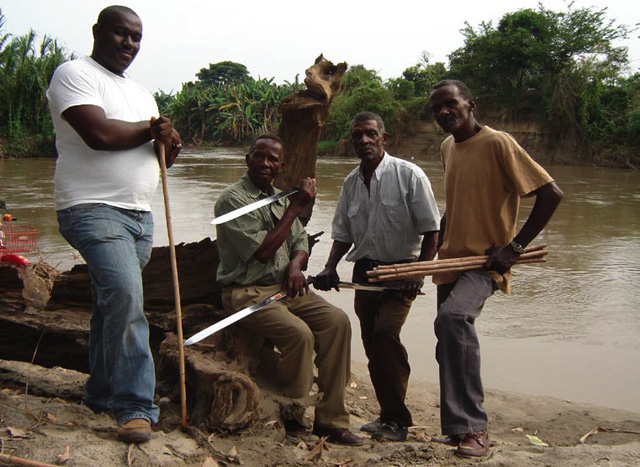
On March 22, 1990, Bernardo Jaramillo Ossa was shot while I was playing basketball with my classmates at school. I still retain very clear images from that day—like a series of close-up shots in a very sad movie. One of my friends came over to the court and told me Jaramillo had been shot in the airport. I remember his face and the faces of the other players when I repeated the news to them. I remember picking the ball up and then dropping it on the way back to the brick school building. I remember the light filtering through the leaves of the old trees, the low voices, the sound of the bell ringing as we went up to the stairs to the classroom.
Marxist candidate Pardo Leal had been murdered two years before; dissident liberal candidate Galán only seven months before that. Jaramillo had been the last hope of the democratic Left. And like us, he had graduated from a middle-class high school and studied law at a public university, as many of us would also do. The son of a prosperous shop owner and an accountant, he could have been our eldest cousin.
The news that Jaramillo had been shot quickly spread throughout the school. Everyone appeared to be very agitated, like bees swarming around a honeycomb. We entered the classroom to find our history teacher sitting behind her desk listening to a radio. She turned in our direction but seemed to look right through us, as if we were not there. We already knew what she was about to tell us: Bernardo Jaramillo was dead.
We were given permission to go back outside, but nobody was in the mood for sports. We sat quietly against a wall at the end of the football field, looking out onto the empty field. I remember the youngest kid lighting a cigarette, knowing that nobody would tell him to put it out.
*
I could recount all the details of Bernardo Jaramillo’s life. I could say that he had or didn’t have a family, that he liked this or that, that he was or wasn’t a good politician. At this point, it’s useless. Perhaps the only thing worth mentioning is that he insisted, as no other politician had done before, that Colombia was one of the most unequal countries on earth and that middle-class people like him were a rare minority between a small oligarchy and a vast underclass.
This is how I must end this story. There is nothing much left to say about this love story between the middle classes and the revolution, other than the fact that it is passionate and inspiring at times, but also incredibly bloody and sad. Even if I had more to say I might not have the will to do so if I think about those anecdotes from fifty years of violence. I would run the risk of becoming a very unhappy member of the middle classes . . . or a revolutionary.
